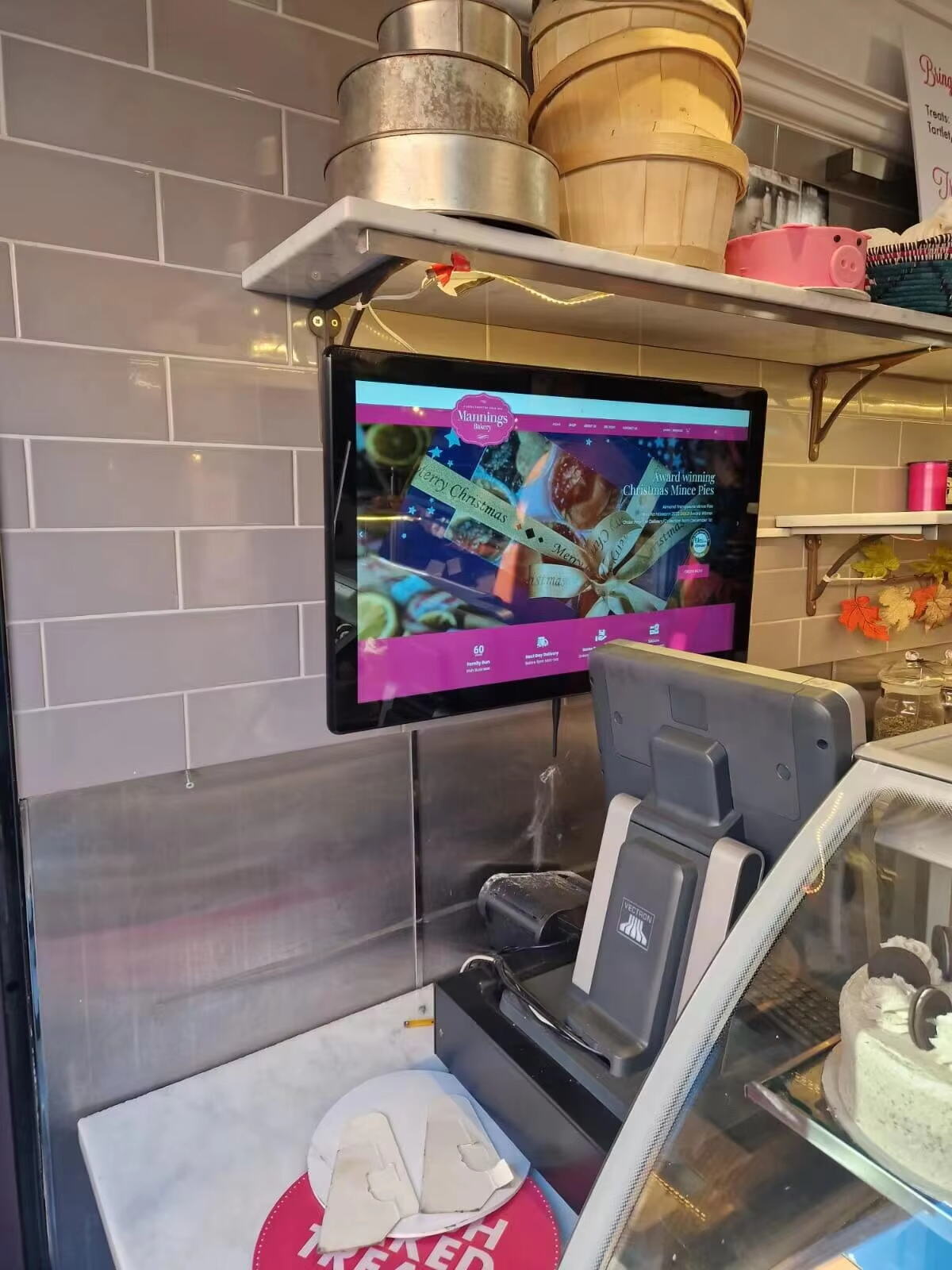
The dining landscape has evolved rapidly, and menus are no longer confined to paper or static boards. Restaurants and cafes are increasingly turning to Advertising Display solutions to showcase offerings in vibrant, dynamic formats. By adopting digital menu boards, establishments can present their menus with eye-catching visuals, seamless updates, and interactive elements that captivate customers. This shift reflects a broader trend toward digital signage, where Advertising Display technologies redefine how patrons engage with menus, promotions, and brand stories.
Digital menu boards powered by Advertising Display platforms allow operators to schedule content rotations throughout the day. Morning specials can appear at breakfast hours, followed by lunch combos and dinner promotions without manual intervention. Automated scheduling ensures menus remain relevant and timely, reducing the risk of displaying outdated items. Operators simply upload assets to a centralized system, set time slots, and the Advertising Display takes care of the rest.
How quickly can you adjust prices or introduce flash deals? With traditional menus, you need to reprint or manually swap boards—a process that is both time‑consuming and costly. Advertising Display systems enable instant content updates across all screens with a few clicks. Whether you’re announcing a limited‑time seasonal beverage or correcting an item’s price, changes propagate immediately. This agility empowers restaurants to react swiftly to inventory levels, supplier changes, or market trends.
Static text can blend into the background, but motion and color command attention. Digital menu boards equipped with Advertising Display technology leverage high‑resolution images, animated transitions, and video loops to create immersive menu showcases. Customers are drawn to mouth‑watering food photography and short clips of food preparation, increasing appetite appeal. The dynamic presentation transforms passive waiting areas into engaging brand environments.
Are customers looking for nutritional details or allergen information? Interactive Advertising Display kiosks let patrons tap on menu items to view ingredients, dietary filters, and customization options. Some systems even integrate with mobile apps via QR codes, allowing users to build orders digitally and receive loyalty points. This interactive approach not only enhances user satisfaction but also streamlines the ordering process, reducing errors and wait times.
Traditional menu production involves graphic design, printing, lamination, and installation—expenses that recur with each menu update. By switching to digital menu boards underpinned by Advertising Display networks, restaurants eliminate recurring print costs and labor associated with swapping materials. Content updates occur remotely, freeing staff to focus on guest service rather than manual sign changes. Over time, savings on printing and installation quickly offset the initial hardware investment.
Managing multiple locations can be a logistical challenge, especially when menus differ regionally or seasonally. Advertising Display solutions offer centralized dashboards where operators control every screen across the network. Updates are scheduled once and pushed to all selected sites, ensuring consistent brand messaging. Real‑time monitoring features alert managers to offline screens or content errors, enabling rapid troubleshooting and minimizing downtime.

How effective are your menu promotions? Digital menu boards embedded within Advertising Display systems capture performance data, from screen dwell times to interaction counts. These analytics reveal which items attract the most attention, guiding decision‑making for future menu designs. By analyzing viewer metrics, restaurants refine content placement, highlight high‑margin dishes, and adjust promotions based on customer engagement patterns.
Advertising Display networks can integrate with customer databases and loyalty programs to deliver personalized offers. Returning patrons might see tailored recommendations based on past orders, while new visitors receive introductory deals. Geo‑fencing capabilities trigger localized promotions when users enter the vicinity. This targeted approach increases uptake rates and fosters deeper customer relationships by delivering relevant content at optimal moments.
Consistency in brand imagery and messaging reinforces customer recognition. Digital menu boards allow restaurants to standardize fonts, color schemes, and iconography across all locations. By controlling design templates within the Advertising Display platform, brands maintain a unified aesthetic—from flagship outlets to pop‑up events. Consistent visual identity enhances professionalism and builds trust among patrons.
Restaurants often run seasonal promotions—pumpkin‑spiced beverages in autumn or refreshing fruit bowls in summer. Advertising Display systems simplify the rollout of thematic campaigns by enabling designers to swap entire content libraries with seasonal artwork. Tempting visuals, animated snowflakes, or beach scenes can transform menus in seconds. This flexibility keeps the dining experience fresh and aligned with cultural events or holidays.
Whether operating a single café or a national franchise, Advertising Display hardware can scale to meet diverse needs. Indoor screens, outdoor signage, and self‑service kiosks all leverage the same content management backbone. As new locations open, managers simply add devices to the network, assign screen groups, and push menu content instantly. Modular deployments streamline expansion while preserving centralized control.
The future of digital dining involves AI, augmented reality, and voice assistants. Advertising Display platforms are increasingly compatible with these innovations. AI‑powered analytics can predict demand surges for certain menu items, prompting proactive supply adjustments. AR overlays allow customers to visualize meal portions on their tables, and voice‑activated ordering streamsize kitchen workflows. This forward‑looking integration future‑proofs restaurant investments.
Printed menus contribute to deforestation and landfill volume when updated frequently. Digital menu boards eliminate paper usage entirely, aligning with eco‑friendly initiatives and appealing to environmentally conscious diners. Restaurants can highlight sustainability commitments directly on screens, reinforcing corporate responsibility messages. The Advertising Display approach significantly reduces the carbon footprint associated with print production.
Modern Advertising Display units incorporate energy‑saving features such as LED backlighting, ambient light sensors, and automatic sleep modes during off‑peak hours. These measures lower electricity consumption without compromising screen brightness or clarity. Energy‑efficient hardware not only reduces utility bills but also supports green certifications and sustainability goals for hospitality brands.
Long queues at the counter can deter customers and lead to abandoned orders. Digital menu boards, especially when combined with self‑service Advertising Display kiosks, distribute ordering across multiple touchpoints. Customers can order and pay directly at screens, reducing front‑of‑house congestion. Faster service enhances guest satisfaction and frees staff to focus on food preparation and customer interactions.
Today’s diners expect transparency regarding ingredients and nutrition. Digital menu boards provide ample space to display allergen icons, calorie counts, and ingredient lists. Interactive Advertising Display systems let customers filter items by dietary preferences—gluten‑free, vegan, or low‑sugar—ensuring they make informed choices. Clear, accessible information increases customer confidence and safety.
How much impact does a menu redesign have on sales? By comparing sales data before and after digital menu board deployments, restaurants can quantify revenue increases for featured items. Advertising Display platforms often include A/B testing capabilities, allowing teams to display variant menus in parallel. The resulting performance metrics reveal optimal layouts and content strategies that drive the highest sales lift.
Digital menu boards demand an initial investment in hardware and software subscriptions. However, the ability to update content remotely, reduce print costs, and gather actionable insights accelerates return on investment. Advertising Display analytics help managers allocate budgets toward high‑performance promotions, refine menu pricing, and plan future upgrades based on real‑world usage patterns.
Voice assistants are making their way into quick‑service restaurants. Integrating Advertising Display screens with voice recognition allows customers to place orders verbally while viewing menu items. This hands‑free approach caters to multitasking diners and provides accessibility for customers with disabilities, enhancing inclusivity and convenience.
Augmented reality (AR) is poised to revolutionize how diners preview dishes. Patrons can point their smartphones at an Advertising Display or table marker to see a 3D rendering of a meal—complete with portion size and plating details. AR menus bridge the gap between digital and physical experiences, enticing customers and reducing uncertainty about unfamiliar dishes.
Most Advertising Display platforms offer API connections that sync menu data and pricing with point‑of‑sale systems. This ensures accurate order fulfillment and inventory tracking.
High‑quality Advertising Display screens are rated for 50,000 to 70,000 hours of operation. With proper maintenance and ambient light considerations, they can serve reliably for 7 to 10 years.
Software licensing models vary by vendor. Some Advertising Display solutions include content management in the hardware purchase, while others charge annual subscription fees for advanced analytics and remote monitoring.
Implement clear font sizes, high‑contrast color schemes, and screen reader compatibility. Interactive Advertising Display kiosks can offer voice prompts and tactile controls for users with visual or motor impairments.

Copyright © 2025 Shenzhen YJCen Technology CO.,Ltd. All rights reserved. - Privacy policy